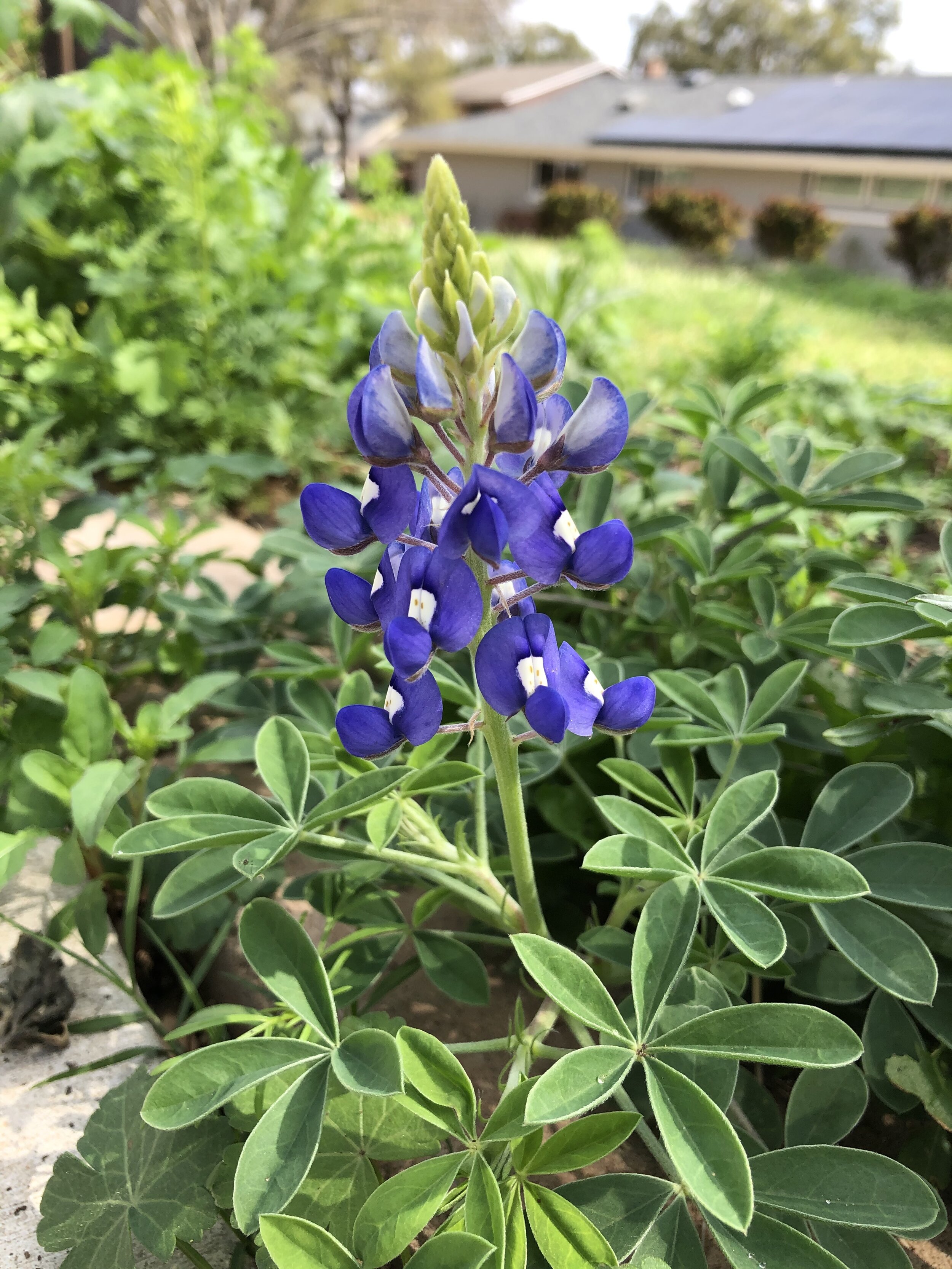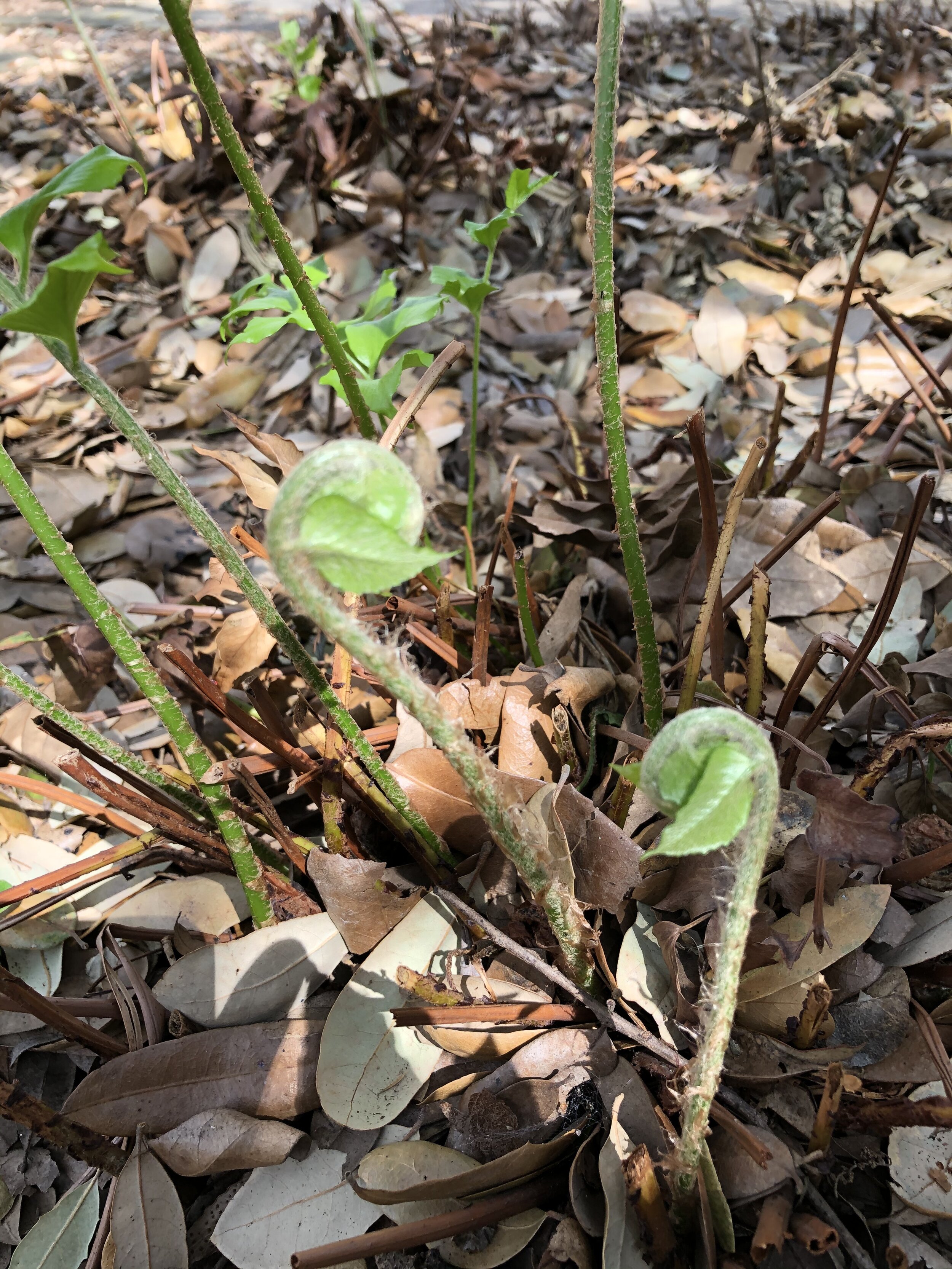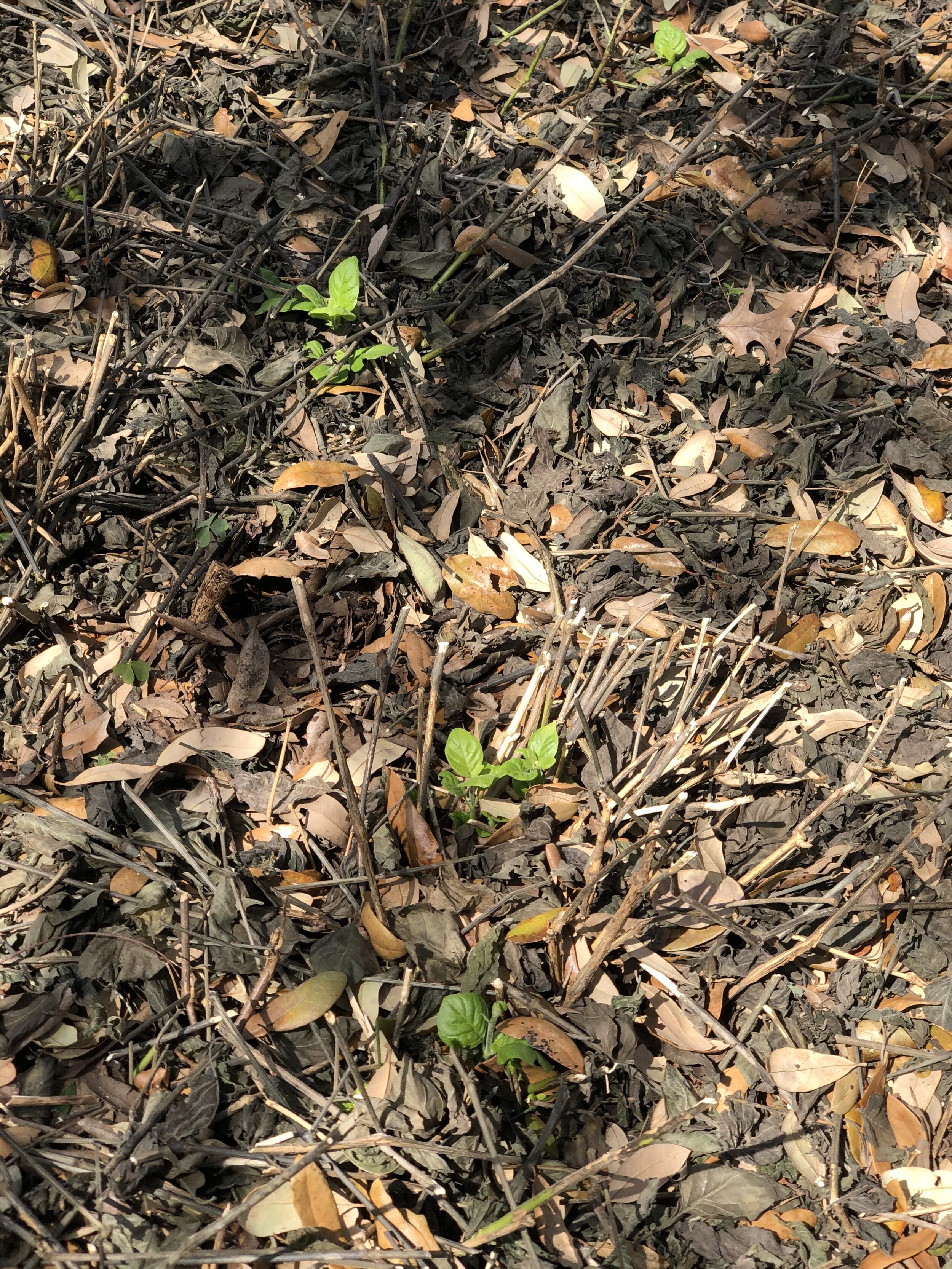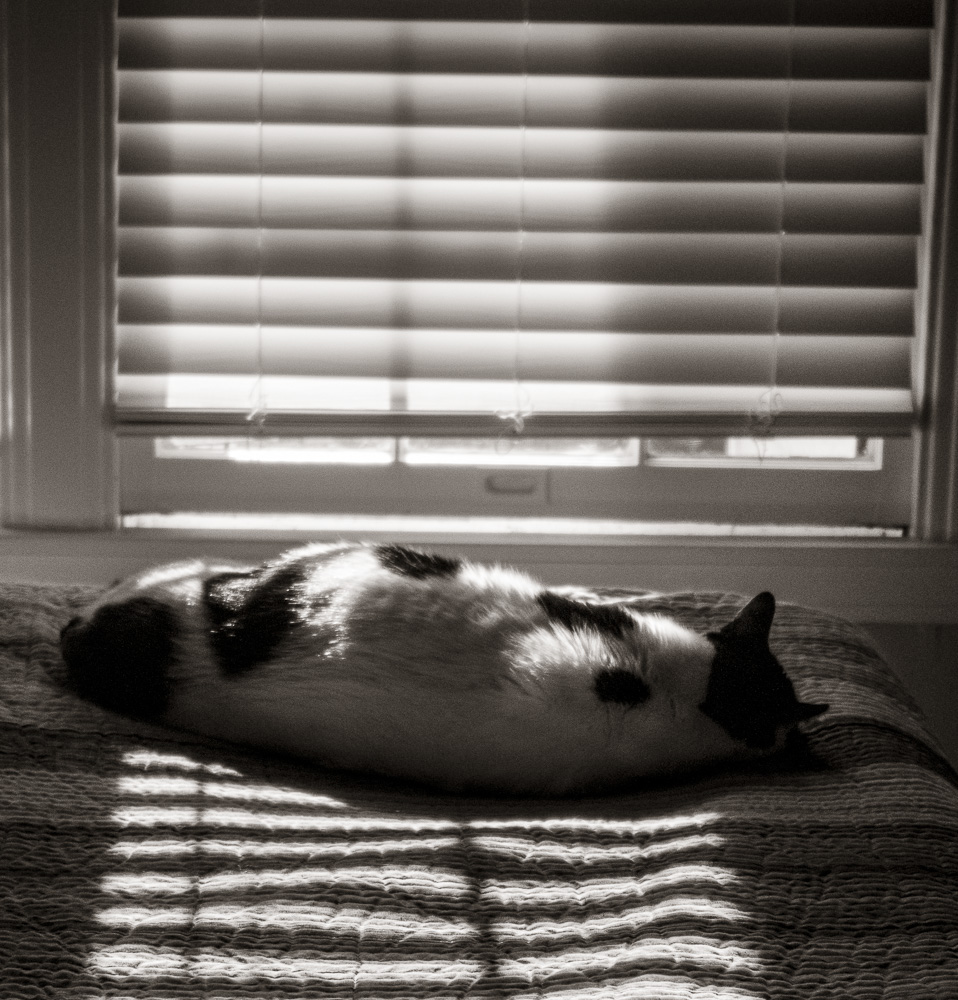A month ago, our yard and gardens were white with snow for a week. In San Antonio. Two rounds of snow, plus single digit temperatures. Add to that power outages and a couple of days with no water. We were among the fortunate in that we had time to fill bathtubs and pitchers with potable water. And we have a gas stove.
As is the case in this state, the temperatures the following week were in the 70s. So, of course, the snow melted.
We (like everyone throughout the state) were left with a yard and gardens that were so freeze burned they were black. In the vegetable garden, the broccoli and cauliflower had literally melted. I’ve never seen anything like it. Plants that usually survive a couple of freezes in the 20s were blasted. It was rather like looking at death. Because death had come to the plants and trees.
Given that we were beginning to close in on the one year anniversary of living with this pandemic, the yard and gardens made me uneasy. I couldn’t seem to get the energy to observe, let alone attend, to the gardens that I love so much. Too much was lost.
Those of you who are gardeners will understand this. Plants and shrubs, herbs and flowers become friends of a sort. Gardeners get to know the flora they care for. Those plants teach us along the way, offering beauty and nutrition, enhancing flavors and smells. It’s a very sweet exchange most of the time.
I suppose it seems silly to speak of grief. Yet that’s what it was. Some family death anniversaries fall around this time, and of course, we have known some who have suffered the devastation of COVID. The country had marked the deaths of 500,000 people just before the SNOWVID events occurred. I know I was not alone in feeling overwhelmed and out of gas.
One day a couple of weeks ago I finally got the courage to look at the holly ferns in the front yard. There, right in front of me, a new fern frond was unfolding. Out of a whorl of dead and mushy leaves, that new frond emerged with a beautiful chartreuse hue. As I looked closer, I saw tiny new leaves on the salvia greggi, the Mexican mint marigold, the oregano, the Mexican petunias.
Those new leaves are so small. It will take several years for those plants to fully recover. Some may never look as robust as they did before that week in February 2021. Nevertheless, the new life is there, literally rising from the ground. Many of the experts I trust in the gardening world keep saying, “Be patient. Native plants will probably return. Texas trees like live oaks have the DNA that has remembered the wild extremes of Texas weather.” So, I look to the magnificent old live oak in our front yard, still standing steady, going through its annual spring leaf fall. Beneath its canopy, salvias, Turk’s cap, plumbago, shrimp plant, foxtail fern and cana lilies are beginning to muster new life.
Much in the wildflower garden survived, though about a third of those plants were a slimy mess and needed to be pulled up. Now, the bluebonnets are beginning to bloom, which gives me so much joy. Neighbors are stopping to take photos, just like they did last spring when we were all on lockdown and everyone was walking daily. I love to stand at the kitchen window and watch as parents show the bluebonnets to their children, as older friends and neighbors stop and gaze with affection at the unfolding bluebonnet blue.
It may be the fourth week of Lent, but I’m humming an Easter hymn, “Now the green blade riseth.” And sometimes adding this favorite: “All our hope on God is founded.” The gospel of the gardens gives us hope and community, death and life, prayer and work, community and communion. As a prayer from the Hebrides leads us to praise, “Glory, glory, glory to you, thou great God of life, glory to you.” Amen.







